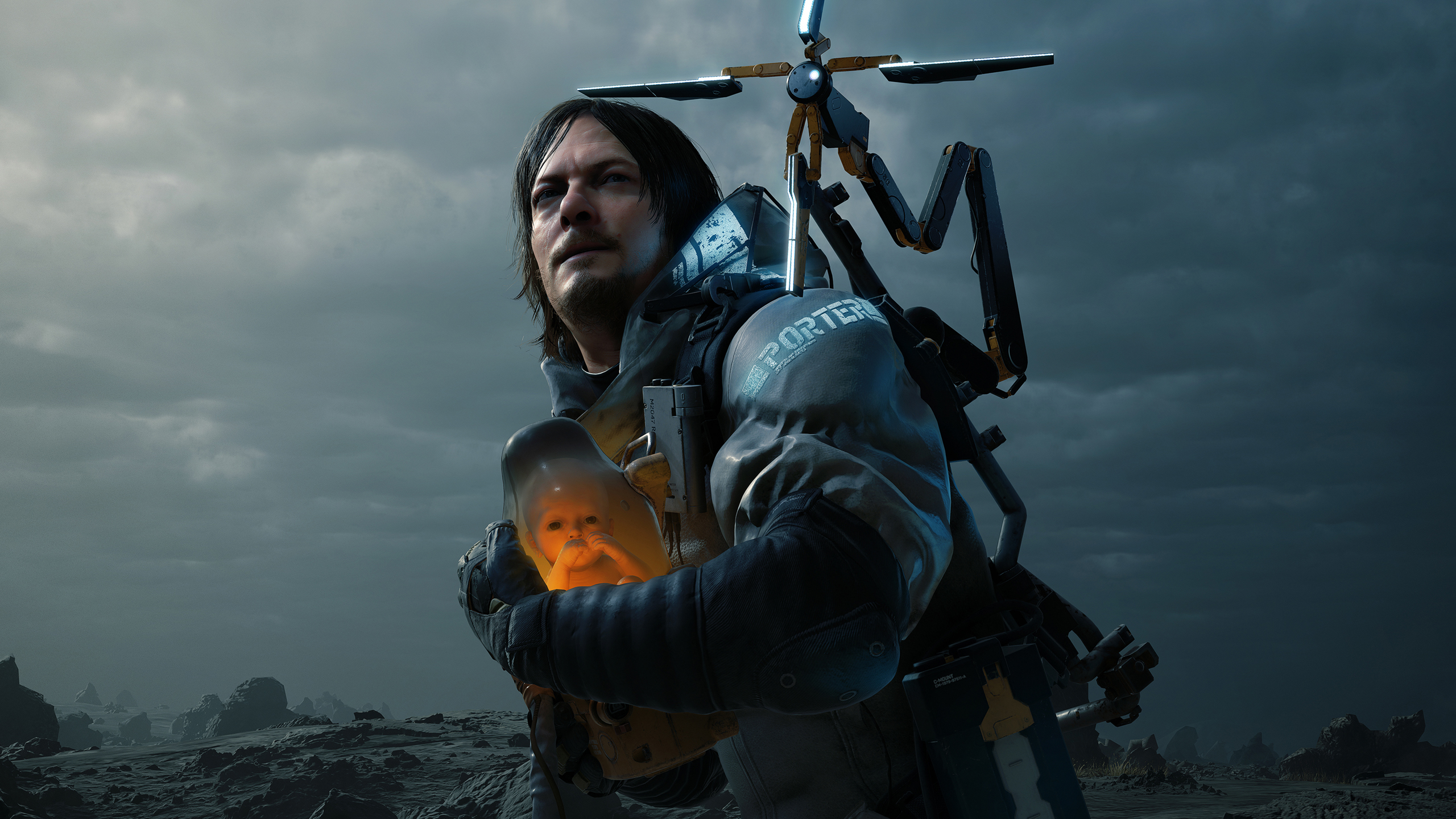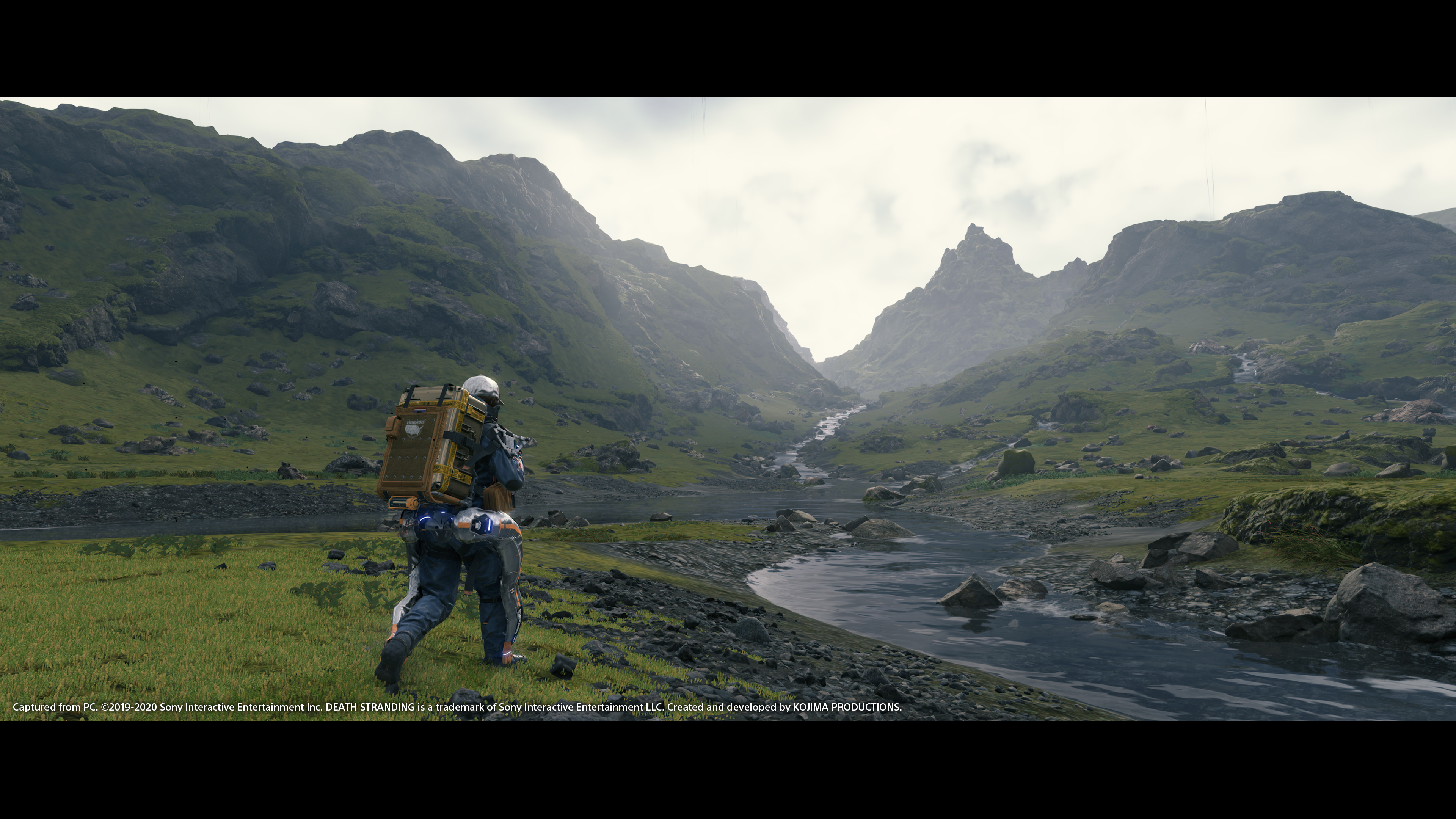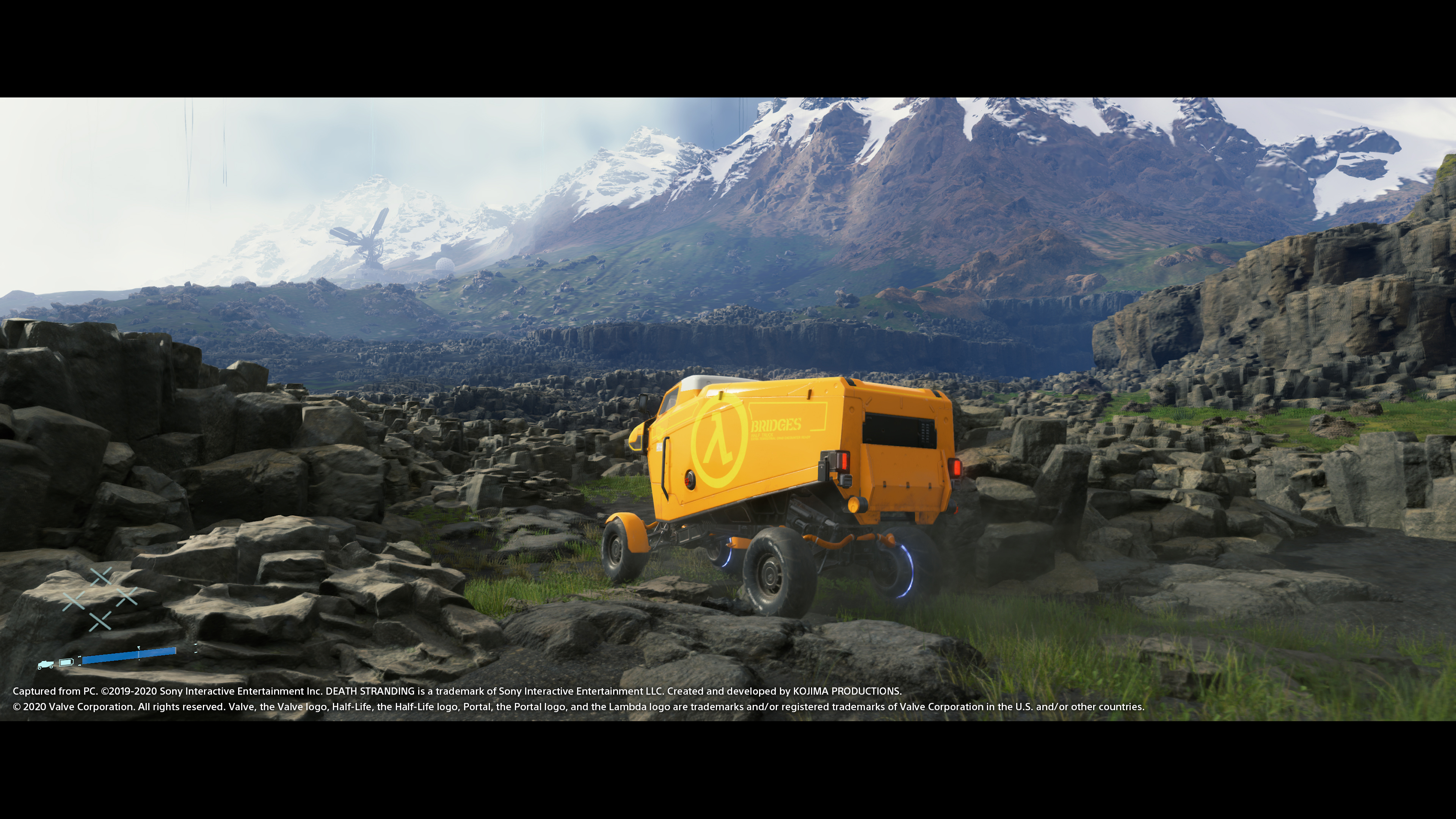Death Stranding on PC is a great version of a very weird game
Early impressions of Hideo Kojima's first post-Metal Gear game.

The long-awaited PC version of Death Stranding is finally being released on July 14. Written, directed, and produced by Metal Gear Solid creator Hideo Kojima, it's his first game since leaving Konami, and it's every bit as wild, weird, and wonderful as you'd expect. We'll have a proper review shortly before it launches, but until then, here are some early impressions based on a few hours with a (very complete-feeling) preview build of the game.
I'll save the full rundown of what Death Stranding is actually about for the review, 'cause it's gonna take some explaining. But the simplest way to put it is that you are Sam Porter Bridges (played by The Walking Dead's Norman Reedus), a courier delivering supplies across a vast, eerie, post-apocalyptic United States. You spend much of the game hiking, climbing, wading through rivers, navigating rough terrain, and wondering how the hell you're gonna get this big, precarious stack of parcels over that distant mountain range. It's kinda like Spintires without the vehicles. At least in its early stages.


One of Death Stranding's many idiosyncrasies is how, despite ostensibly being set in the US, the landscape is quite clearly based on the frozen tundra of Iceland. I mean, look at the screenshots: that is clearly Scandinavia, not North America. That curious detail aside, the environments are really stunning to look at—especially in 4K. And virtual photographers will be glad to know that the PC version comes bundled with an extensive photo mode. It's great, but it's dangerous, 'cause I keep stopping to take photos, which is making an already lengthy game even longer. Even ignoring its copious side missions, Death Stranding will take around 40-50 hours to finish.
In terms of performance, the game runs well on my PC. That's with an RTX 2080 Super, 16GB of RAM, and an Intel Core i7-9700K, running at 4K/60 fps. I've had no frame drops or frame pacing issues during play, and everything feels deliciously smooth and snappy. This is the first PC game to use Guerrilla's Decima engine, and it's an impressive showcase for it. Death Stranding uses performance capture and photogrammetry, the result of which is hyper-detailed characters (Mads Mikkelsen is scarily lifelike) and natural, realistic terrain. It's very handsome, and naturally, looks its best on PC.
As for graphics options, you can set a maximum frame rate up to 240, change the shadow resolution, enable or disable ambient occlusion, choose from FXAA or TAA anti-aliasing, and turn sharpness, depth of field, and motion blur effects on or off. Admittedly, not the widest set of graphics options I've ever seen in a PC game, but it still offers a decent level of customisation. And if your PC is similar to mine specs-wise, you can just crank everything up to max anyway. There's no real-time ray tracing in Death Stranding, sadly, but it does have support for NVIDIA's DLSS 2.0, a new AI upscaling tech that lets you play in high resolutions with higher frame rates—and it actually works.
While my frame rate was fine in-game, I was getting a few dips in cutscenes, many of which involve lingering close-ups of impossibly detailed character models, and all kinds of fancy post-processing effects. But with DLSS, set to the 'quality' preset, everything was smoothed out—and with no perceptible loss of visual fidelity. I'm not gonna pretend I know exactly how deep learning super sampling works, but this video by NVIDIA does a decent job of explaining the basics. It's impressive stuff, but you will need a GPU from the RTX range to take advantage of it in Death Stranding and other supported games.


Death Stranding is perfectly playable with a keyboard and mouse, and the controls have been intuitively mapped. But it's clear it was designed with a gamepad in mind, and I prefer it that way. The analogue stick gives you fine control over Sam's walking speed, which is handy when, at several points in the game, you have to sneak past dangerous, ghostly creatures called BTs. With KBM you hold the control key to slow him down, which doesn't feel quite as natural. Scrambling over rocky terrain also feels nicer with analogue controls, but that's just my preference. The important thing is, you have a choice.
Keep up to date with the most important stories and the best deals, as picked by the PC Gamer team.
That's the current extent of my experience with the game, but my review will cover everything in more detail. The fact that I've been itching to dive back into it the whole time I've been writing this should give you some idea of what I think so far. It makes a striking first impression, and I love the terrain traversal. There's something very satisfying about being presented with an impossible-looking landscape, then successfully making your way across it using ladders and ropes, cargo intact. I'm also intrigued by the mind-bending story, but I'm not expecting any of it to make any more sense when the credits roll.
If it’s set in space, Andy will probably write about it. He loves sci-fi, adventure games, taking screenshots, Twin Peaks, weird sims, Alien: Isolation, and anything with a good story.


